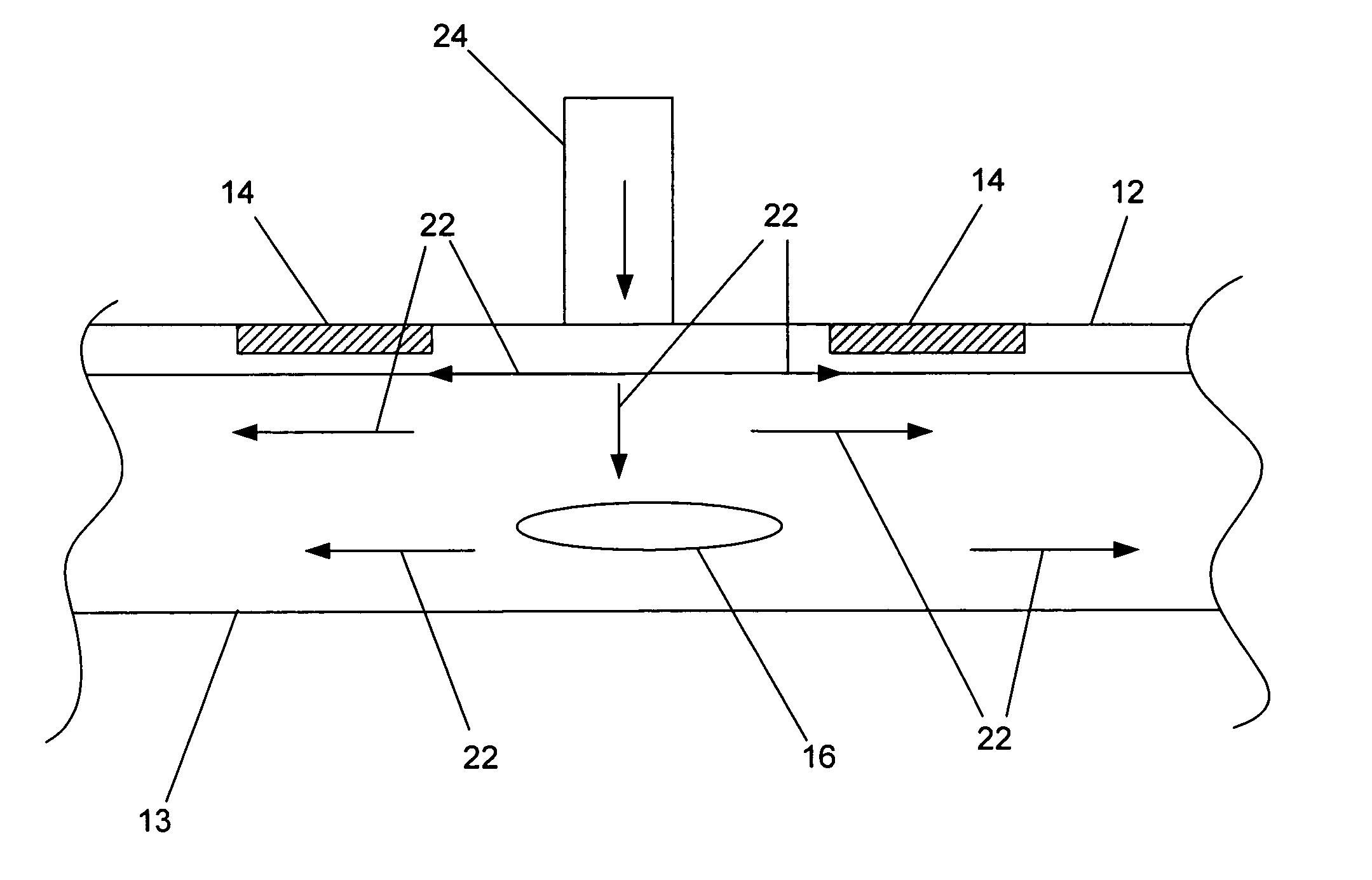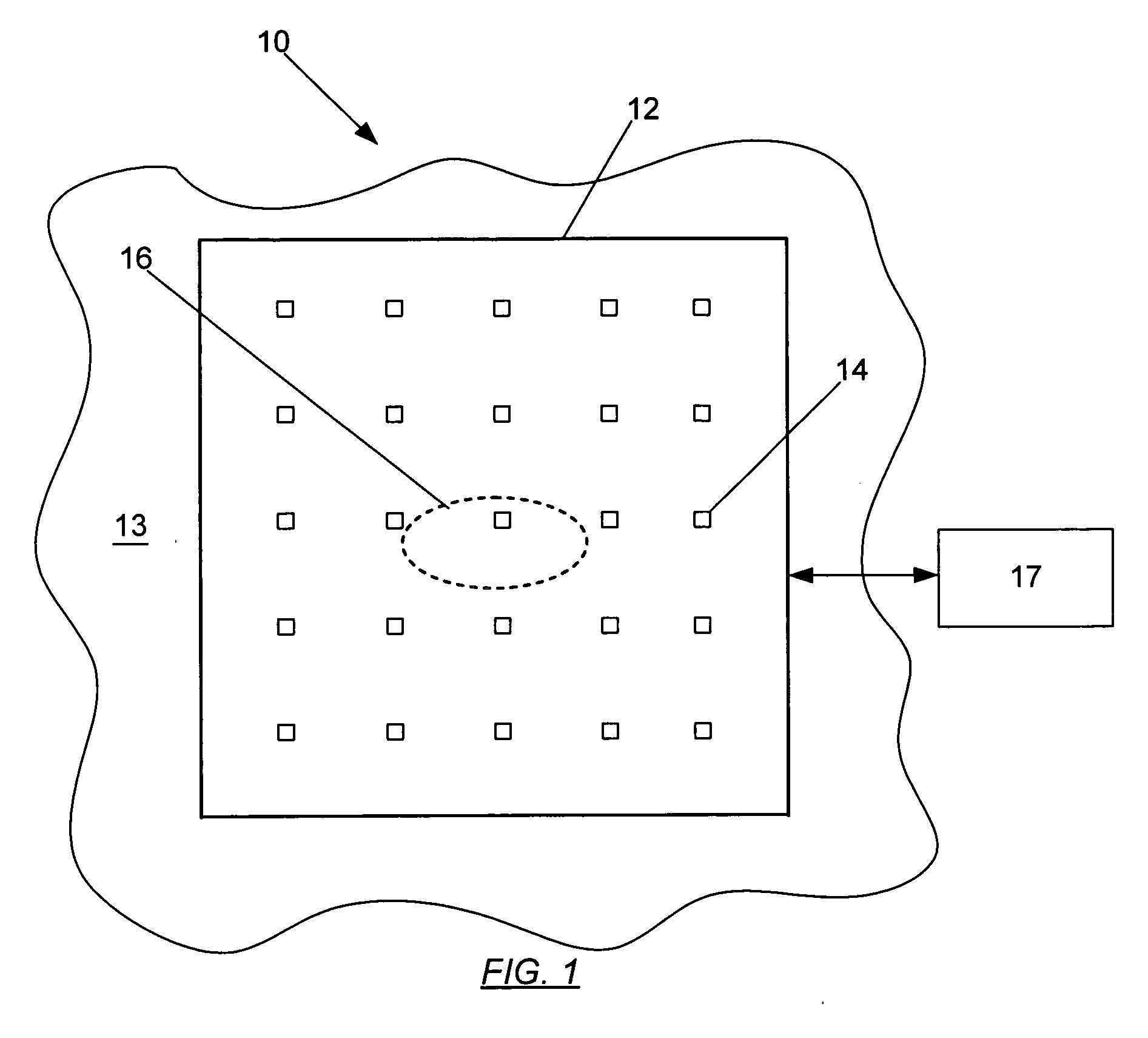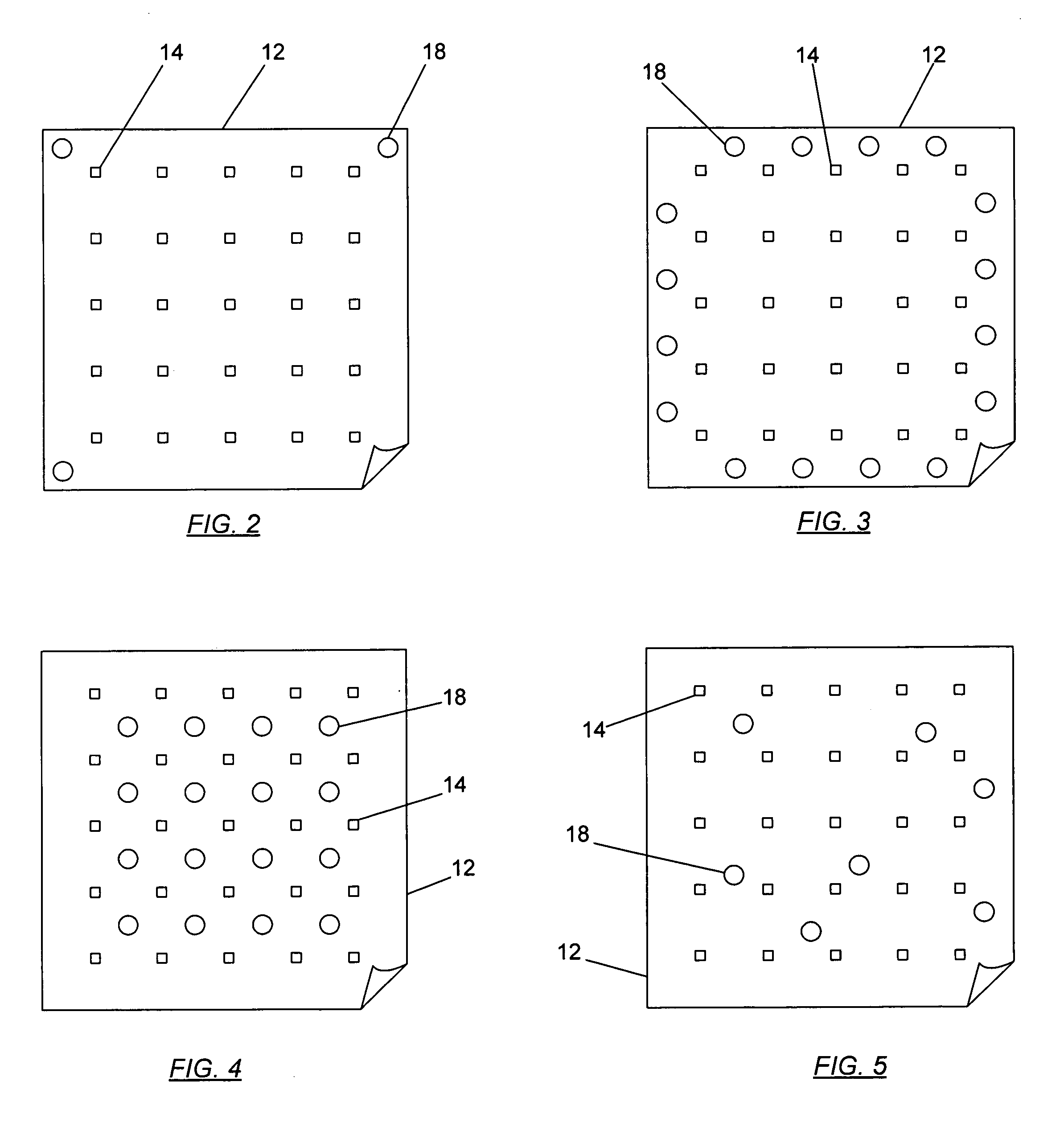Non-destructive inspection system and associated method
a non-destructive and inspection system technology, applied in the direction of structural/machine measurement, elasticity measurement, instruments, etc., can solve the problems of prone to human error, time-consuming and laborious manual scanning of structures, and inability to inspect composite and metallic structures at the same time, so as to achieve the effect of reducing cost and speeding up inspection speed
- Summary
- Abstract
- Description
- Claims
- Application Information
AI Technical Summary
Benefits of technology
Problems solved by technology
Method used
Image
Examples
Embodiment Construction
[0025] The present invention now will be described more fully hereinafter with reference to the accompanying drawings, in which some, but not all embodiments of the invention are shown. Indeed, the invention may be embodied in many different forms and should not be construed as limited to the embodiments set forth herein; rather, these embodiments are provided so that this disclosure will satisfy applicable legal requirements. Like numbers refer to like elements throughout.
[0026] Referring now to the drawings and, in particular to FIG. 1, there is shown an inspection system 10. The inspection system 10 includes a flexible sheet of material 12 including a plurality of non-destructive sensors 14 arranged about the sheet. The sensors 14 are capable of detecting a flaw 16 in a structure material 13. As will be explained in greater detail below, an impact mechanism 24 is used to generate stress waves 22 along the surface and within the structure 13 such that the sensors 14 are capable o...
PUM
| Property | Measurement | Unit |
|---|---|---|
| defects | aaaaa | aaaaa |
| structure | aaaaa | aaaaa |
| flexible | aaaaa | aaaaa |
Abstract
Description
Claims
Application Information
 Login to View More
Login to View More - R&D
- Intellectual Property
- Life Sciences
- Materials
- Tech Scout
- Unparalleled Data Quality
- Higher Quality Content
- 60% Fewer Hallucinations
Browse by: Latest US Patents, China's latest patents, Technical Efficacy Thesaurus, Application Domain, Technology Topic, Popular Technical Reports.
© 2025 PatSnap. All rights reserved.Legal|Privacy policy|Modern Slavery Act Transparency Statement|Sitemap|About US| Contact US: help@patsnap.com



